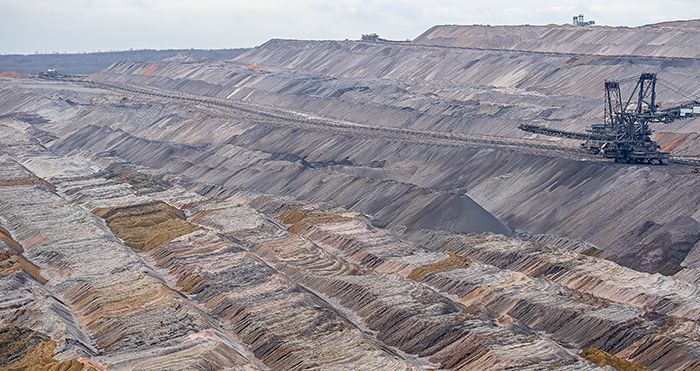
Everything You Need to Know About Iron Ore Beneficiation
The Iron and Steel industry worldwide is expanding at a fast pace. This growth indicates iron ore as a vital raw material for many applications. Among the various iron ores available, the two most prominent ones are magnetite and hematite.
Hematite is an important iron ore with a lumpy nature and high-grade quality. Magnetite accounts for poor-grade lumps. It can be utilized after beneficiation to achieve fine particle-size materials.
The iron ore beneficiation process is suitable for improving iron content and reducing silica and alumina in the ore. The ore beneficiation can be done in the dry form and wet form.
Dry and Wet Processing of Iron Ore Beneficiation
Dry Processing
The high grade is more than hematite iron ore and is subjected to the dry beneficiation process to meet the multistage screening requirement or crushing to obtain calibrated lumps. It can help you achieve finer particle sizes, making the product useful for various applications.
Wet Processing
The wet processing is practiced for medium/low-grade hematite iron ore. The process involves multistage crushing followed by distinct iron-washing stages, such as wet screening, scrubbing, or classification.
The advantage is only partial removal of adhered silica and aluminum free in the lumpy size fraction. The washing practice marginally enhances minerals’ handling properties by removing clayey matter.
Common Practices for Iron Ore Beneficiation
Numerous developments have taken place in iron ore processing in recent years. A lot of techniques are used for iron ore processing, as follows:
· Washing and Wet Scrubbing
It is a common process extensively used in the processing of lumpy iron ore to dislodge soft lateritic masses, limonitic clay particles, and fine sand prone to lumps. It is invariably practiced when the ore consists of granular and coarse particles of hematite mixed with limonitic clay and barren sand.
· Scrubbing
It is the process of removing clay, potential oxidation, and slimes present in the iron ore by using water. The surface is conditioned by scrubbing for beneficiation. It helps in removing soft lateritic and brittle materials, limonitic clay, and fine materials present in the ore. Grinding and crushing are performed after scrubbing of ore.
· Screening
It is a vital step for dry beneficiation of iron ore and is the first step of the beneficiation process. Screening is a vital step before separating the waste mineral and ore product. It can lead to further classification and separation of iron ore.
· Gravity Separation
It is a proven and accepted technique for concentrating numerous minerals. It has been used as a basic form of mineral concentration for decades. It holds low cost and high efficiency in the flow-sheet development and features sufficient differences between the gangue material and valuable material.
· Jigging
It is the process of segregating various materials in the ore through the fluid by stratification based on the movement of particles that are fluidized by the pulsation of fluid in the vertical plane.
The stratification causes the arrangement of particles in layers with increasing density from top to bottom. It is a relatively convenient separation and offers a beneficial trade-off between the reduced yield and operating cost.
· Gravity Separation
This technique is used for separating the dense particles of iron ore from the lighter gangue materials. It is performed using jigging or a dense method of separation. It is achieved using robust equipment.
In this process, a suspension of ferrosilicon or magnetite is used as a medium for separating the iron ore particles on the basis of their density.
· Froth Flotation
It is an extensively used technique for iron ore beneficiation. The froth floatation process involves mixing finely ground ore with a reagent and water. The air is blown through this mixture.
The mixed reagent selectively associates with the surface of the desired materials, creating a froth. It helps to separate the precious iron minerals from the impurities.
· Palletization
The iron ore beneficiation is not processed into pellets. The process involves creating pellets or small balls by beneficiation the iron ore with a binder, like additives and bentonite.
The formed pellets are hardened by heating the mixture at a high temperature in a furnace. The process improves the transportation and handling of iron ore, making it ideal for use in blast furnaces.
· Dewatering
After the beneficiation process, dewatering is sometimes carried out to remove excess water from the mineral. It is usually performed using filters or thickeners to reduce the moisture content from the concentration.
· Magnetic Separation
Magnetic separators are used for separating magnetic substances from non-magnetic particles. The process involves fine grounding of the ore over a magnetic drum or a high-intensity separator.
It is used for removing magnetic minerals like magnetite, which is attracted to the magnetic field and separates from the non-magnetic substances.
These are the best practices for iron ore beneficiation. You may select a specific technique and process based on your requirements. If you want the best iron ore beneficiation equipment for your business, contact Steqtech. We can provide you with electromagnetic separator equipment that beneficiates fine particles of iron ore in a cost-effective and efficient way. Contact us to learn more about our machine.






